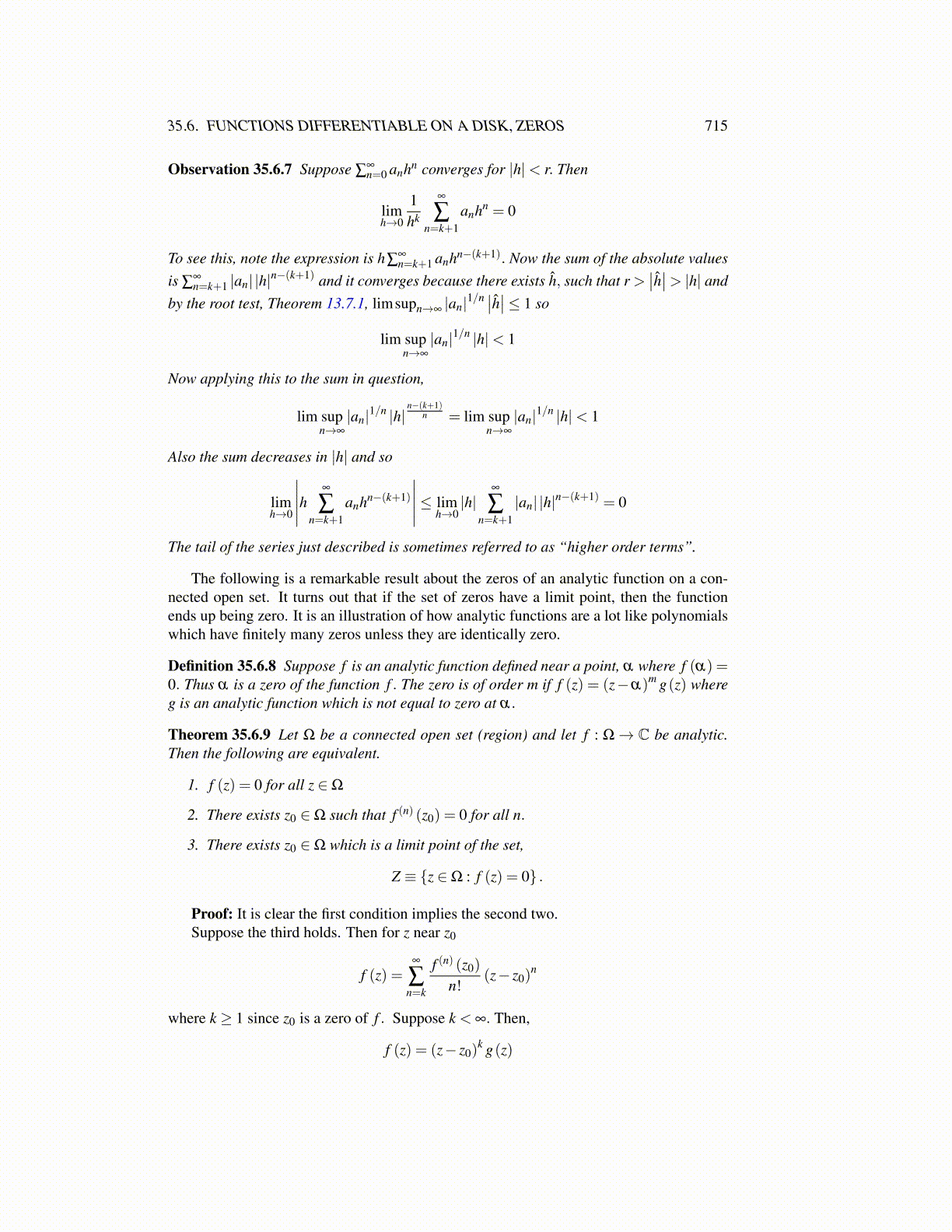
35.6. FUNCTIONS DIFFERENTIABLE ON A DISK, ZEROS 715
Observation 35.6.7 Suppose ∑∞n=0 anhn converges for |h|< r. Then
limh→0
1hk
∞
∑n=k+1
anhn = 0
To see this, note the expression is h∑∞n=k+1 anhn−(k+1). Now the sum of the absolute values
is ∑∞n=k+1 |an| |h|n−(k+1) and it converges because there exists ĥ, such that r >
∣∣ĥ∣∣> |h| andby the root test, Theorem 13.7.1, limsupn→∞ |an|1/n ∣∣ĥ∣∣≤ 1 so
lim supn→∞
|an|1/n |h|< 1
Now applying this to the sum in question,
lim supn→∞
|an|1/n |h|n−(k+1)
n = lim supn→∞
|an|1/n |h|< 1
Also the sum decreases in |h| and so
limh→0
∣∣∣∣∣h ∞
∑n=k+1
anhn−(k+1)
∣∣∣∣∣≤ limh→0|h|
∞
∑n=k+1
|an| |h|n−(k+1) = 0
The tail of the series just described is sometimes referred to as “higher order terms”.
The following is a remarkable result about the zeros of an analytic function on a con-nected open set. It turns out that if the set of zeros have a limit point, then the functionends up being zero. It is an illustration of how analytic functions are a lot like polynomialswhich have finitely many zeros unless they are identically zero.
Definition 35.6.8 Suppose f is an analytic function defined near a point, α where f (α) =0. Thus α is a zero of the function f . The zero is of order m if f (z) = (z−α)m g(z) whereg is an analytic function which is not equal to zero at α.
Theorem 35.6.9 Let Ω be a connected open set (region) and let f : Ω→ C be analytic.Then the following are equivalent.
1. f (z) = 0 for all z ∈Ω
2. There exists z0 ∈Ω such that f (n) (z0) = 0 for all n.
3. There exists z0 ∈Ω which is a limit point of the set,
Z ≡ {z ∈Ω : f (z) = 0} .
Proof: It is clear the first condition implies the second two.Suppose the third holds. Then for z near z0
f (z) =∞
∑n=k
f (n) (z0)
n!(z− z0)
n
where k ≥ 1 since z0 is a zero of f . Suppose k < ∞. Then,
f (z) = (z− z0)k g(z)